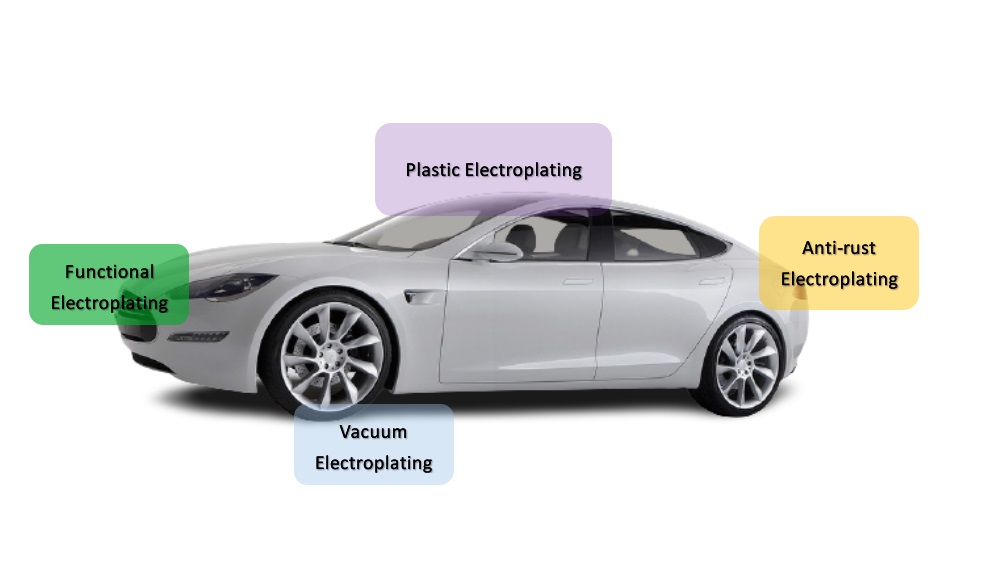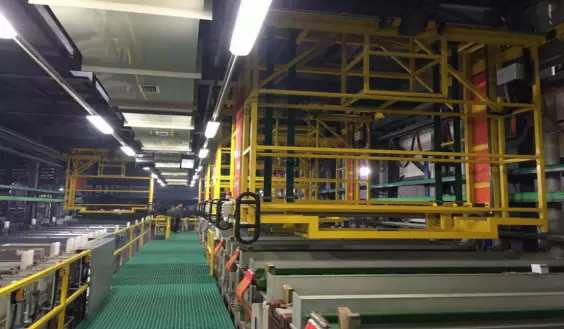In the maintenance of equipment and molds, the use of rapid electroplating technology for the partial repair of parts has its own uniqueness, convenient and flexible operation, saving maintenance costs, and obvious economic benefits.
I. Basic principle of rapid electroplating
In essence, this electroplating technology is the same as the usual electroplating in electroplating bath, which is the process of discharging and depositing the charged metal ions in the plating solution on the negative plate. The difference is that rapid electroplating does not need an electric bath. As long as the plating pen is dipped in the plating solution and rubbed repeatedly on the working surface, a solid and dense metal film will be formed. As long as the power consumption is accurately controlled, the thickness of the coating can be accurately controlled, ranging from 2m thin to several mm thick, which can be arbitrarily controlled to ensure the size of the workpiece.
The primary tool for rapid electroplating is the plating pen. It consists of a positive pole and a pen holder. The positive electrode is the working surface, which is mostly made of graphite or platinum iridium alloy, covered with a layer of absorbent cotton to dip in the electroplating solution. In practical work, the shapes of the workpieces to be repaired are diverse. In order to meet this need, the plating pens are not only bar shaped, flat shaped and circular, but also semi-circular, crescent shaped and circular. They can be freely selected according to the shape of the workpieces.
II. Characteristics of rapid electroplating
1. Rapid electroplating can selectively and rapidly electrodeposit metal coatings on metal surfaces or non-metal surfaces after surface metallization- This set of equipment can be plated with gold, silver, copper, iron, tin, nickel, tungsten, indium and other metals.
2. The coating has high bonding strength, good mechanical properties and strong controllability of coating thickness. Generally, no reprocessing is required.
3. The whole workpiece does not need to be immersed in the plating solution, and the parts that do not need plating do not need coating protection, eliminating many pre plating processes.
4. In addition to being used for equipment repair in the workshop, rapid electroplating can also be used for outdoor operation, which is also very suitable for the maintenance of mining equipment.
5. The workpiece to be repaired does not need disassembly and handling, but can be repaired on site, which saves time, manpower and material resources.
6. There is relative movement between the workpiece and the plating pen, which usually requires manual operation. It is difficult to achieve high-efficiency mass automatic production, but it is very suitable for equipment maintenance.
III. Application scope of rapid electroplating
1. Repair the worn surface of mechanical parts or tooling, restore the geometry and size, and implement out of tolerance remedy.
2. Fill the scratches, pits, spots, holes and other defects on the parts.
3. Prepare or repair the protective layer on the surface of parts.
4. Large, complex, single piece and small batch of workpiece surface, and local nickel plating, copper, zinc, cadmium, tungsten, gold, silver and other anti-corrosion coatings and anti-corrosion coatings to improve surface performance
5. Improve the brazing property of materials.
6. Reverse current is used for dynamic balance weight removal, deburring and mold engraving.
Rapid electroplating technology can repair a wide range of mechanical parts, such as repairing the inner and outer ring surfaces of rolling bearings, repairing sliding friction surfaces such as guide rails, shafts and bearing shells, repairing rectangular splines and repairing the surfaces of matching platforms with various oil seals.
IV. Examples of rapid electroplating repair
There is a scratch on the guide rail of a gantry planer. The scratch size is 0.1~2mill wide and 0.1 ~ 1mm deep. This technology is used to repair it. The process is as follows.
1. Plastic surgery. Notch and reshape with scraper, fine file, oilstone and other tools, so that the plating pen can fully contact the bottom of the scratch.
2. Apply protective paint. Apply insulating varnish on the non repair surface of the machine tool to prevent the plating solution from injecting into the base metal or generating replacement copper on the surface.
3. Wipe the surface to be plated and adjacent parts with acetone or gasoline to completely remove oil.
4. Stick polyester glue paper on both sides of the surface to be plated.
5. Electricity purification. The voltage is 12V, and wash with clean water after being electrified.
6. Activation. The voltage is 12V. First activate with No. 2 activation solution. When the surface is black and gray, remove the carbon black with No. 3 activation solution after washing, so that the surface is silver gray. Immediately start plating after washing.
7. Plating bottom layer. Voltage IOV, water wash after priming with non acid fast nickel.
8. Plating dimension layer. Voltage 8V, using high-speed alkaline copper as the size layer, when the groove mark is shallow, it is plated at one time; When the groove mark is deep, the plating shall be stopped regularly, polished with steel sand or fine oilstone, and then plated with alkali copper after electric cleaning and water washing.
9. During activation, the workpiece is connected to the positive pole, the plating pen is connected to the negative pole, and the workpiece in other processes is connected to the negative pole, and the plating pen is connected to the positive pole. Rapid electroplating technology is widely used, easy to use, cost saving, and worthy of promotion.








 May. 16, 2020
May. 16, 2020 



